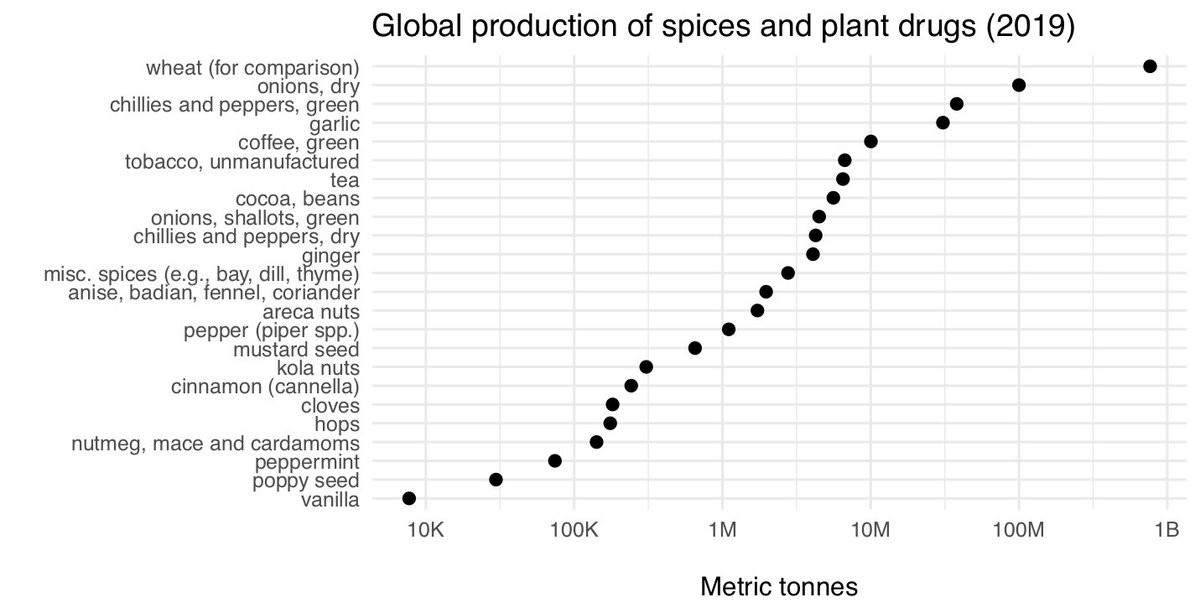
A new pre-print w/ @AaronDBlackwell, @adlightner & Sullivan that weaves together human carnivory, shamanism, & encaphalization.
"We propose that in the story of human evolution, which has long featured hunters, healers had an equal role to play"
🧵 1/n
osf.io/76bka
"We propose that in the story of human evolution, which has long featured hunters, healers had an equal role to play"
🧵 1/n
osf.io/76bka
2. We tackle two mysteries. First, human brain size tripled since the start of the Pleistocene.
Why?
Why?

3. Second, today, we consume huge quantities of plant substances with few nutrients but many secondary compounds.
Why?
Why?

4. A standard story of encephalization (which we endorse) is that brain expansion was fueled by a high-quality diet, but hunting was also cognitively demanding, selecting for greater cognitive abilities. 

5. We argue, however, that fighting pathogens was also cognitively demanding (as I'll explain below), and that pathogen pressure shifted, and perhaps increased with the increase in carnivory in Homo c. 2.6 mya. This was another selection pressure for encephalization. 

6. We (and many others) propose that the transition to carnivory, which increased the quantity of meat in the diet (@HermanPontzer @bendormiki @BrianaPobiner), lowered the barriers to zoonotic pathogen spillover 

7. Today, most human infectious diseases originate in non-human animals -- spillover. Unlike plants, mammalian prey are infected with pathogens that can often infect humans (plant foods can be contaminated with animal feces, but plant pathogens rarely infect humans) 

11. Did the shift to carnivory shift pathogen pressure? Newly emerging pathogens are poorly adapted to the new host -> infect tissues that are v. harmful to us, eg nervous system but don't support onward transmission. Did Homo need new strategy to defend against brain infections? 

12. Pathogen pressure might also have *increased* in Homo. Newly emerging viruses have wide range of case fatality rates, which on average are higher than those of endemic viral infections.
More spillover -> selection for new pathogen defense strategies in Homo?
More spillover -> selection for new pathogen defense strategies in Homo?

13. Increase in body size, range size, and longevity in Homo might also have increased investment in immunity (but lower population density and decreased polygyny might have decreased it) 

14. If carnivory shifted/increased pathogen pressure in Homo, there should be evidence of immune divergence compared to chimps, and there is: humans have low stomach pH, diff CMAH/SIGLEC biology, extreme sensitivity to LPS @JF_Brinkworth, diff salivary proteome @gokcumen & more 

15. Our bodies seem to recognize that animal foods pose a pathogen threat -- they increase inflammatory responses -- whereas plant foods are often anti-inflammatory (perhaps because they are anti-infective) @JoeAlcockMD 

16. We argue that increased immune investment against increased zoonotic pathogen pressure also involved increased cognitive abilities. Shamans and healers are often highly respected for their knowledge and intelligence 

17. The local flora provides thousands of potentially anti-pathogen pharmaceutical compounds that healers must master 

18. There is also considerable evidence that spices have positive health effects against infectious and other diseases 

19. There is also considerable evidence that traditional medicine offers real benefits. In a survey of the ethnographic record, we found evidence for prestigious teachers @JoHenrich, feared diviners @mnvrsngh, and efficacious healers @adlightner 

20. Final argument: how to defend the brain from increased zoonotic disease? Psychotropic drugs! They cross the blood-brain barrier, are toxic to many parasites, and can therefore treat infections of the CNS. 

21. An intriguing example. T. solium is a tapeworm that spilled over from hyenas to the human lineage 2-3 mya, and it can infect the brain. Today, one of the most popular "recreational" drugs in Asia -- betel nut -- is effective against this parasite. Coincidence? Maybe. 

• • •
Missing some Tweet in this thread? You can try to
force a refresh











